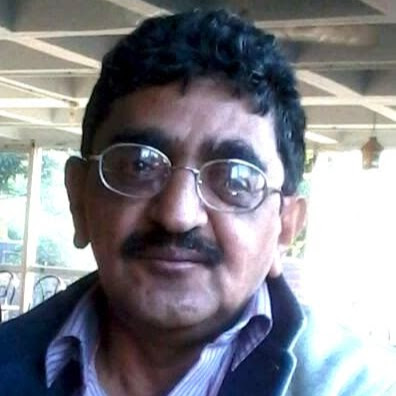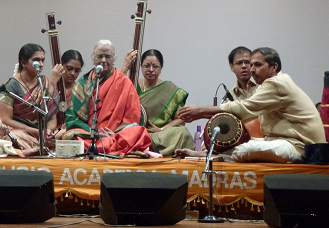Science popularization can be done in many ways.Researchers at the Institute of Mathematical Sciences in Chennai have chosen to reach the public through an unconventional approach.
For the past two years, a group of scientists at the Institute has been holding a programme of popular lectures on scientific topics at the Music Academy in the heart of the city.
They are now working on the third edition of the programme called `Science at the Sabha’. Four top scientists and mathematicians would hold forth on topics at the cutting edge of science. The programme is scheduled for February 11.
The programme will start with a talk by Dr. Shubha Tole of Tata Institute of Fundamental Research (TIFR), Mumbai. She will talk on “Outside-in: How we perceive the world?” The world we know is “constructed” in our brains using information gathered by our five senses.
Understanding how sensory nerves connect to the brain in a growing embryo is an area of intense research, because it is this circuitry that controls how we experience the world.
There is no age limit to learn science. A member of the audience getting a doubt cleared at the 1st edition of Science at the Sabha held on February 14, 2016.
" Understanding how sensory nerves connect to the brain in a growing embryo is an area of intense research, because it is this circuitry that controls how we experience the world "
Dr. R. Rajesh, a physicist at IMSc, will talk on `why does time go forward?’ As per the laws of physics, it is equally possible for the time to flow backwards. But, we see it move only forward. Dr. Rajesh would explain the paradox and what it means for what we see in the world around us. His research interests include studying how differently shaped objects pack, as also the structure of bones.
Dr. Guruswamy Kumaraswamy of National Chemical Laboratory (NCL), Pune, would deliver the third talk on “Materials: The Hard, the Soft and the Squishy”. Is toothpaste solid or liquid? It doesn’t flow unless we squeeze the tube but flows readily after that. Dr. Kumaraswamy will describe some soft and squishy materials that we encounter in daily life and how such materials can be combined with harder ones to form unusual composite materials.
Listening with rapt attention. This picture is from the 1st edition of Science at the Sabha on February 14, 2016.
For example, the sea shells that protect soft-shelled aquatic animals are hard and yet they don’t break easily, unlike glass which is hard but shatters readily. Scientists are just beginning to learn how nature builds these amazing materials and to use this knowledge to build synthetic composites that can be put to use for myriad applications including for building faster aircrafts.
Vijay Kodiyalam, who is also from IMSc would deliver the fourth and last lecture. He will talk on `Knotty problem: how many different ways can you tie your shoelaces?’ Knots and braids are familiar to all of us from childhood. How do we tell one knot from another? How many knots are there? Given a tangled loop of string, how do we know how is it knotted or whether we can open it up without having to cut it or not? Besides being of intrinsic interest, answers to such questions have applications to subjects as varied as cryptology and the structure of DNA. In his talk, Dr. Kodiyalam will try to explain how mathematicians think about these questions.
Speaking to India Science Wire, Dr. Gautam Menon and Dr. K.N.Raghavan of IMSc - brains behind the event – said “there will be question-and- answer sessions after each talk, with questions being posted live on Facebook and Twitter handles. Short movies about opportunities for science education and research in India will be screened just before the talks begin.” (India Science Wire) (India Science Wire)

